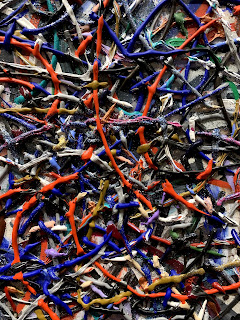Construct an Identity is the forming of a person’s values, beliefs, practices, and knowledge, which is influenced by both cultural systems and individual actions. In order for us to understand the construction of identity, we must understand identity. “Identity is never a priori, nor a finished product; it is only ever the problematic process of access to an image of totality.” (Bhabha 1994:51). Identity is how we understand ourselves, identity is always changing, we construct our identity through connection, rejection, experience, and emotion. There are two great influences on identity, first, race and ethnicity, second, Sexuality, and Gender.
One of the reasons why our identity is always changing is because of sex and gender. We are born a sex but we choose our gender, we choose who we want to be. More and more people in recent years have been able to identify against, with regards to gender. More and more people can stand for themselves, and not be ashamed of who they are or want to be. As an effect, this allowed many individuals to have an identity aside from heteronormative. Thus sex and gender have a great effect on today’s cultural identity.
Also, Race and ethnicity are changing our identity and defining who we are today. Race tells us that our minor genetic differences define us. Ethnicity makes a good culture to relate to whether its rituals, religion or even holidays, it made you different and separates you from others. One way we see we see identity being
constructed is in many artists’ work. Many artists utilize symbolism and metaphors in their artwork to construct identity. When you look at most of the other artists work, their works could tell us a lot more about their identity, then the artists themselves.
One of the artists that his work really had an effect on me and that shows a construction of identity is Dr. Fahamu Pecou. Pecou, an interdisciplinary artist whose works combine observations on hip-hop, fine art, and popular culture. Pecou work addresses concerns around contemporary representations of Black masculinity and how these images impact Black masculinity. His painting at the Montclair Museum, Rock Well: Radiant Pop Champ, which is a three portrait painting of him. When you look at the painting you see him looking at the mirror to draw himself. He is showing you what he sees himself look at the mirror but also what he thinks he looks like as he is drawing himself and what others see him looking at him from the back. The artist is conveying the idea of how it's easier identifying who they are not then identifying who you are. This painting was part of a series he called ART HISTORY NEXT, which questions the notions of inclusion and exclusion within the historical cannon of fine art.
Another artist whose work shows identity construction is, Ben Jones. Jones is an artist, activist, and educator, who uses his art to bring awareness to the plight of humanity throughout the world. Ben Jones once said “ I want to lift people up give them a sense of empowerment and redemption.” his mural Envision Empower Embrace is based on selected imagery from his paintings which address events related to social justice, climate change and environmental disaster. Looking at the mural you see an image of a fish in the center framing renowned jazz singer and political activist Nina Simone. Ben Jones used the fish image because throughout history many civilizations used it to represent life. Jones’s artwork was always affected by current events which had a great effect on his identity.
Another artist, that his work utilizes symbolism and metaphors in their artwork to construct identity, is Kehinde Wiley. Wiley engages the signs and visual rhetoric of the heroic, powerful, majestic and the sublime in his representation of urban, black and brown men found throughout the world. His painting; Mater Mbaye, was a portrait of a youth that Wiley has met in 2007 in Senegal. This painting was part of Wiley’s personal exploration of his own ancestral roots. Wiley’s exploration off of his own ancestral roots due to not knowing his father, there for most of his work depicted portraits of black and brown men found throughout the world. Also, he was chosen by former President Obama, to paint his self-portrait.
Cindy Sherman is another artist that really showed identity construction in her work. “Sherman’s exhaustive study of portraiture and self-portraiture often a playful mixture of camp and horror, heightened by gritty realism provides a new lens through which to examine societal assumptions surrounding gender and the valuation of concept over style.” The painting “Untitled 402“ was a self-portrait of her, showing what society thinks of her when they see her. Sherman excels in turning attention to the human conditions because her subject is most often herself. Her art is non-judgmental and as much of a portrait of human vulnerability as it is of artifice.
Therefore, construct identity is what makes us who we are today. A person’s identity is like our DNA, no one has the same DNA, is what makes us different from one another. Our identity varies depending on, our cultures, religion, beliefs, where we are from, where we live, our family, our friends, what we do and our gender. Although I can write all day about what makes us different from each other, just know that we are all different and our differences are what makes us who we are today.





No comments:
Post a Comment